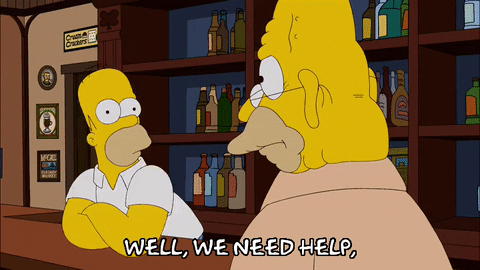
November 3, 2021

SHAQ ATTACK
NBA superstar Shaquille O’Neal doesn’t need much of an introduction. The world-famous basketball player better known as Shaq has multiple NBA championships and has become one of the sport’s most recognizable stars.
But these days, he’s making a name for himself in another court - the business world.

Shaq owns over 200 businesses, including car washes, fitness centers, and several franchises (Auntie Anne’s Pretzels is a pretty delicious one). He’s taken lessons from his time as a rising basketball player and applied it to running his businesses - to great success, I might add.
A few weeks ago, we had the amazing opportunity to sit down with Shaq at Playbook 2021 for a live Q+A session. There, he broke down how he approaches business on a massive scale.
Here are some takeaways from the conversation:
SKEPTICAL
You spend a lot of time and resources on your advertisements. But (if you're like most companies) you really don't know if people paid attention to them.
Sure - you can rack up impression stats (total number of ad views). But the average person gets bombarded with 1,700+ banner ads monthly.
As a result, they only pay attention to about half of them. Meaning, your ad might be right in front of a lead's face, but they pay zero attention to it.

Not to mention, most platforms report that your ad "reached" someone if at least half the ad is on-screen for one second. But that doesn't prove that anyone actually saw it - let alone paid attention to it.
Marc Guldimann created Adelaide, a tool that measures ad effectiveness, to get that proof! The tool works by assigning an attention unit (AU) to each ad. The AU quantifies how much attention people will pay to the ad, and it's based on two factors:
Customers can then use AUs to compare the cost to the predicted outcome. And in theory, this protects advertisers from overpaying on underperforming ads.
But can Adelaide actually deliver on this lofty promise? Their big-name customer list (Microsoft, Slack, and Verizon all use the tool) seems to think so.
In fact, Adelaide customer AB InBev reports seeing double-digit gains in brand worth after changing video ad placement and size, per the tool's recommendation.
Similarly, Media Kitchen cut underperforming ads that Adelaide said underperformed. After doing so, the company freed up ad money while seeing little change in conversions.
But these results come at no small cost. Customers pay roughly $5k to $10k a month for Adelaide. (Excuse us as we choke on our coffee over those figures.)

And we'll admit, this all sounds well and good. But for most small businesses that could really use this product, that pricepoint is inaccessible. So, who out there wants to build an Adelaide competitor for all of us, small businesses? 😉
👉 Learn more about Adelaide's formula.
STEP-BY-STEP
When it comes to training your employees, you need a program that will teach them the skills they need to succeed in their roles. But when it comes down to building that training program, it can get pretty complicated.
Thankfully, we’ve created a step-by-step guide to creating your employee training program. This guide will help you build the best plan and bring your employees up to speed - everything from choosing learning objectives to measuring your training’s impact.
ORDER UP
Cooking up a fix for the hospitality labor shortage
The US isn't the only one getting served a labor shortage for restaurants and hotels. The UK unemployment rate in the hospitality sector is double the rate of the country's economy. And 40% of all job openings listed on SEEK, the #1 Australian job-search site, were for hospitality positions.

But no matter the country, the problem comes from the same issues. On top of being underpaid, workers feel underappreciated and overworked.
So, the industry is now forced to listen. And it's trying to woo back workers and get their businesses fully staffed, especially before the holiday rush when more people start eating out and traveling.
Their ideas include:
And even if workers don't bite on these new offerings, companies are implementing new tech to run their business with fewer people. For example, Yoello helps customers order food and drinks all by scanning a QR code. Meaning, more orders can be placed with fewer servers available.
Regardless of what steps companies take, this industry-wide shift proves that "new ingredients" are necessary to attract and retain great talent. And it's promising to see that companies are taking action to find a winning recipe for that.
👉See what else the industry is doing.
TL;DR